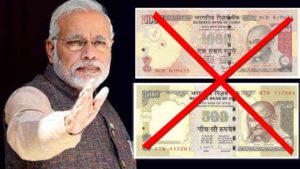To strengthen the national economy and make it more transparent and efficient by way of eradicating black money, restricting the financial resources of terrorists and curb the circulation of fake currency the Union Government has decided to ban the old notes of Rs 500 and Rs 1000 denomination.
- Chhattisgarh has become the first state in the country to adopt a resolution of supporting the demonetization of high-value currency notes decision of the central government.
- This decision to adopt a resolution was taken in the state legislative assembly headed by the Chief Minister Raman Singh on November 16, 2016.The resolution was passed with 41 votes in favor and 25 against the decision.

Steps taken by the Chhattisgarh Government
Chhattisgarh government has expressed support to the decision, to flush out black money from the system and promote institutional mechanism for clean monetary transactions.
- The state government will take effective steps to encourage people in small business to switch over to the e-payment system.
- The state has also exempted swipe-machines from value added tax (VAT) to encourage e-transactions.
- The government will procure paddy at the minimum support price (MSP) from the farmers of the state from November 16, 2016 onwards and for that e-payment will be made. Government has made all arrangements for the farmers of the state at 1,986 procurement centers.
Govt announces new measures to tackle demonetisation problems
Union government, on November 17, 2016, has adopted new measures to tackle the problems faced by the people regarding the demonetization of 500 and 1000 rupees notes.
Key measures adopted
Famers have been allowed to withdraw up to Rs 25,000 per week from bank account, against crop loan and kisan credit card to ensure sowing in the rabi season. Farmers will also get credit fertilizers.
- Rabi Season crops: Crops which are grown during the winter season (October-March) are called Rabi crop. Seeds of these crops are sown in the beginning of the winter season and harvested at the end of the winter season (April-May). Example: Wheat, Gram, Mustard
- Payment should be made by Cheque at Agriculture Produce Market Committee (APMC) mandi and for Kharif crops. Traders can withdraw Rs. 25,000 per week according to KYC norms.
- Kharif Season Crops: Crops which are grown during the monsoon season (Rainy Season) are called Rabi crop. Seeds of these crops are sown in the beginning of the monsoon season and harvested at the end of the monsoon season (October-November). Example: Paddy, Maize, Millets and Cotton Crops.
All traders registered at the Agriculture Produce Market Committee (APMC) mandi have been permitted to withdraw Rs 50,000 per week.
- Business entities have also been allowed to withdraw Rs 50,000 per week.
- The time limit for payment of crop loan insurance premium has been extended by 15 days.
- In case of Wedding Ceremony, Families having marriage at home can withdraw Rs 2, 50,000 per person from bank account. The person who withdraws from bank account should be father, mother or the one getting married.
- The limit to exchange old notes of Rs. 500 and Rs. 1000 with new note has been reduced to Rs 2,000 per person from the current Rs 4,500, from 18thNovember onwards.
- Central government employees of group C grade like Defence, Railways etc. can withdraw advance salary up to Rs 10,000 that will be adjusted in their November salaries.






